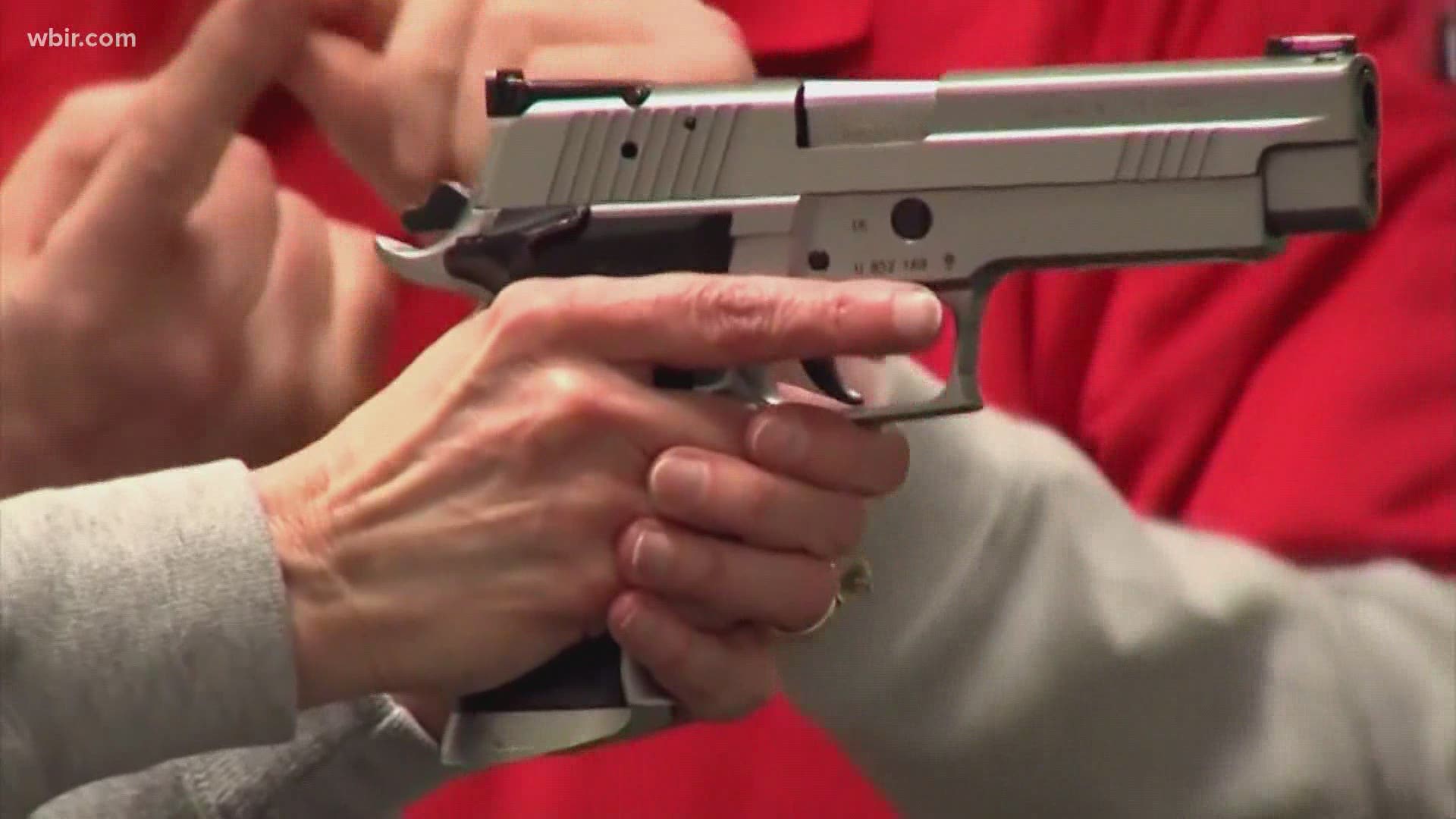To use an air rifle safely, always handle it as if loaded and maintain muzzle awareness. Ensure the safety is on until ready to shoot and never point the rifle at anything you don’t intend to shoot.
Air rifles might evoke childhood backyard adventures, but they demand respect and adherence to strict safety protocols just like any firearm. Engaging in air rifle activities can be a fulfilling hobby, offering precision shooting experiences for enthusiasts of all ages.
The key to enjoying its use lies in mastering safety measures, which ultimately protects the shooter and everyone in the vicinity. Whether for sport, target practice, or pest control, knowing the proper safety procedures ensures a secure and enjoyable experience. Embracing these safety practices not only underlines a commitment to responsible shooting but also helps in fostering a safe shooting environment for everyone involved. Remember, diligent adherence to safety can turn a fun pastime into a lifelong passion with zero accidents.

Credit: ahomeselection.com
The Importance Of Air Rifle Safety
An air rifle, often perceived as a beginner’s firearm, demands the same respect and caution as any weapon. Safety practices are crucial to prevent accidents and ensure a safe shooting environment. Every user must understand the rules of safe handling and operation.
Consequences Of Negligence
Neglecting safety measures can lead to serious outcomes. These may include personal injury, property damage, or legal consequences. In some cases, negligence can result in fatal accidents. Practicing strict safety protocols at all times is not optional but mandatory.
Common Misconceptions
Myth: “Air rifles are just toys.” Fact: They are lethal weapons at close range.
Myth: “Safety gear isn’t necessary.” Fact: It’s imperative to wear protective gear, including goggles and ear protection.
- Always treat the air rifle as if it’s loaded.
- Keep the muzzle pointed in a safe direction.
- Be aware of your target and beyond.
Before You Shoot: Safety Protocol
Before you press the trigger on your air rifle, safety takes first aim. This ‘Before You Shoot: Safety Protocol’ section ensures you handle your air rifle responsibly. From setting up the right environment to what you wear, all steps are vital.
Choosing The Right Environment
Select an environment that’s safe for shooting. This means a clear, enclosed range free from people and potential harm. Make sure the backdrop can stop misplaced shots. Check for a clear line of sight with no chance of stray bullets causing damage.
Inspecting Your Equipment
Regular equipment checks maintain safety. Before shooting, perform a thorough inspection. Look for signs of wear or damage. Use a checklist:
- Check the air rifle for blockages.
- Ensure all screws and fittings are tight.
- Verify the safety catch functions properly.
Appropriate Attire And Gear
Wearing the right gear is a safety must. Ensure eye and ear protection are in place. Choose snug clothing, avoiding anything loose that could get caught in the rifle. Sturdy footwear provides a stable stance. Remember:
| Gear Type | Description | Reason |
|---|---|---|
| Goggles | Impact-resistant | Protects eyes |
| Ear Muffs | Noise-cancelling | Preserves hearing |
| Clothing | Close-fitting | Prevents accidents |
Mastering Safe Handling
Mastering the art of safe handling is crucial for anyone using an air rifle. Whether you’re a beginner or a seasoned shooter, following safety procedures ensures you and those around you remain out of harm’s way. Let’s dive into the core practices that lead to proficient and secure air rifle use.
Basic Handling Techniques
- Always point the barrel away from yourself and others.
- Keep the air rifle unloaded until ready to shoot.
- Verify the safety catch is on before handling the rifle.
- Carry the air rifle with the barrel pointing down.
- Use a gun sleeve when transporting the air rifle.
Loading And Unloading Safely
Proper ammunition handling is essential for safety. Follow these steps:
- Ensure the rifle’s safety catch is engaged.
- Open the breech and visually inspect to confirm it’s clear.
- For loading, insert a single pellet into the breech.
- Close the breech gently to avoid damaging the pellet.
- Only load when you’re ready to shoot to minimize risks.
- For unloading, disengage the safety, point the rifle in a safe direction, and carefully remove the pellet.
Trigger Discipline
Trigger discipline is a key element for air rifle safety:
- Keep your finger off the trigger until you’re ready to fire.
- Focus on your target and what is beyond it before shooting.
- After firing, move your finger back to the side of the rifle.
- Regularly practice this to make it a steadfast habit.

Credit: www.amazon.com
During Shooting: Maintaining Awareness
Focus and awareness are crucial while using an air rifle. Safety measures must never be an afterthought. It’s important to understand the potential dangers and how to handle them correctly. Let’s dive into the essential safety practices during the act of shooting.
Identifying Your Target And What’s Beyond
Clear identification of your target is a must before you take a shot. Not only must you know what you’re aiming at, but also what lies beyond it. Missed shots or overpenetration can result in unintended damage or injury. Here are key points to remember:
- Visual confirmation is essential. Never shoot at sounds or movements.
- Examine the backdrop. Ensure it’s safe and can stop a pellet if you miss.
- If unsure, do not take the shot.
Shooting Etiquette At The Range
Respecting rules and shooters makes for a safe environment. Follow these range shooting etiquette practices:
- Follow all directions from the range officer.
- Keep the muzzle pointed downrange at all times.
- Wear appropriate safety gear. This includes eye and ear protection.
- Communicate with others. Say ‘Cease Fire’ if safety issues arise.
Dealing With Misfires And Jams
Handling a misfire or jam requires patience. Stay calm and approach the issue methodically with these steps:
- Keep the rifle pointed downrange. Wait to see if it’s a delayed shot.
- After waiting, apply the safety, if possible.
- Remove the magazine and clear any jammed pellets using a cleaning rod.
- If the problem persists, seek professional help. Do not force the mechanism.
Post-shooting Procedures
Done with your shooting session? Your safety measures don’t end yet. Properly clearing and storing your air rifle, disposing of ammunition, and performing maintenance checks are all key steps to ensure safety continues post-shooting. Follow these essential procedures to keep your rifle in top-notch condition and avoid any accidents.
Clearing And Storing The Air Rifle
Always treat your rifle as if it’s loaded, even after you’re done shooting. Follow these steps to clear and store:
- Ensure the rifle’s safety is on.
- Remove any pellets from the barrel or magazine.
- Place the rifle in a secure, locked case or cabinet.
A safe space for storage keeps the rifle out of reach from children and unauthorized users. Choose a dry, cool place to prevent rust or damage.
Ammunition Disposal
- Never leave pellets lying around. Collect them in a container.
- Dispose of any damaged or deformed pellets properly.
Recycle metal pellets if possible. Check with local waste management for guidelines.
Routine Maintenance Checks
Routine checks keep your rifle safe for use. Remember the following:
| Check For | Action |
|---|---|
| Barrel Obstructions | Clean regularly to remove debris. |
| Screws and Fittings | Tighten to prevent loss of parts. |
| Air Seals | Inspect for wear; replace if necessary. |
Always refer to the rifle’s manual for specific maintenance instructions. Book a service appointment if you find a complex issue.
Educating Others On Safety
Educating others on safety is essential when dealing with air rifles. Air rifles, while often considered entry-level firearms, carry inherent risks. Ensuring that all users understand proper handling and safety precautions can prevent accidents. This educational approach fosters a responsible shooting community. Teach new shooters, promote a safety culture, and stay updated on safety protocols.
Teaching New Shooters
Introducing a novice to air rifle use requires patience and clear instruction. Start with the basics:
- Always treat the air rifle as if it’s loaded.
- Keep the muzzle pointed in a safe direction.
- Use safety gear like eye and ear protection.
- Understand the rifle’s mechanics and maintenance.
Hands-on demonstrations and supervised sessions build skills and confidence. Pair oral instructions with visual guides, like safety diagrams or videos.
Promoting A Culture Of Safety
Creating a safety-first mindset can inspire responsible behavior. Initiate discussions while on the range or during training sessions. Share safety tips and real-life stories that emphasize the importance of safe handling. Encourage experienced shooters to model responsible practices and mentor new enthusiasts. Create checklists and safety posters as constant reminders.
Staying Informed On Safety Updates
It’s crucial to keep abreast of the latest safety regulations and best practices. Subscribe to relevant channels:
- Air rifle manufacturers’ updates.
- Safety courses and certifications.
- Online forums and communities.
Regular reviews of safety literature and equipment recalls ensure you have current knowledge. Share updates with peers promptly. This proactive learning protects everyone involved.

Credit: www.wbir.com
Frequently Asked Questions On How To Use An Air Rifle Safely
How Safe Are Air Rifles?
Air rifles are generally safe when handled responsibly and with proper safety measures such as eye protection and education on use. Safety training and adherence to guidelines can minimize risks associated with their operation.
Can An Air Rifle Penetrate Skin?
Yes, an air rifle can penetrate skin, depending on the gun’s power and pellet velocity. Higher-powered air rifles are more likely to cause skin penetration.
How Long Does It Take To Break In An Air Rifle?
Breaking in an air rifle typically takes between 100 and 200 shots. This process smooths the internal mechanisms and stabilizes firing performance.
Can You Protect Yourself With An Air Gun?
An air gun may offer self-defense in emergencies, but effectiveness and legality depend on local laws and correct usage. Always prioritize safety and consider self-defense training.
Conclusion
Mastering air rifle safety is crucial for both novices and seasoned shooters. Remember to handle your air rifle with care, respect its power, and always prioritize safety protocols. By doing so, you’ll enjoy this sport and maintain a secure environment for everyone involved.
Stay sharp, stay safe.



